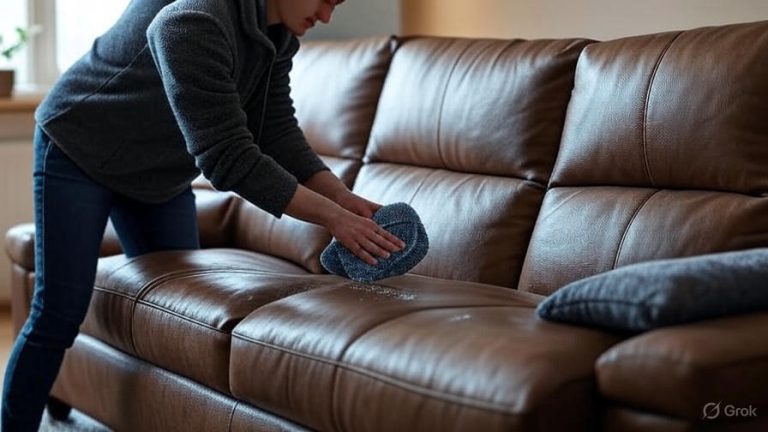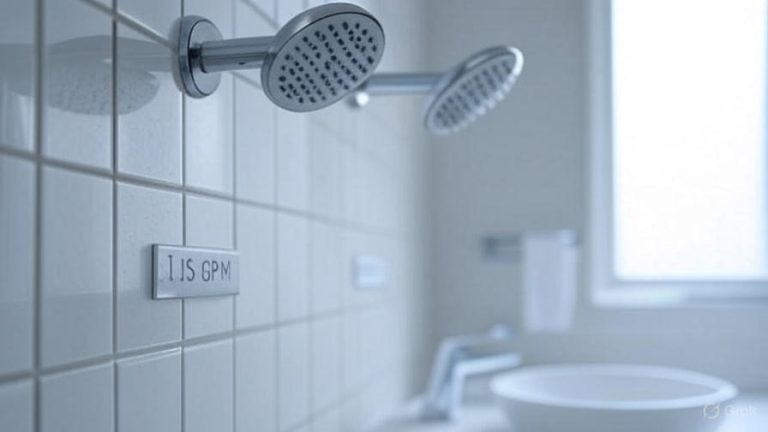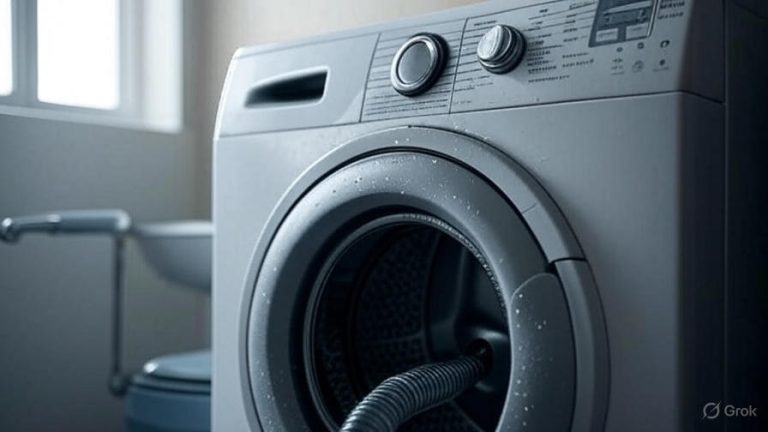How to Acid Stain Concrete?
Acid staining concrete creates stunning, unique surfaces that mimic the appearance of marble, leather, or aged stone. This chemical process produces rich, variegated colors that penetrate deep into the concrete, creating permanent, fade-resistant finishes that last for decades.
Professional contractors charge thousands of dollars for acid stain concrete projects, but homeowners can achieve similar results with proper preparation, quality materials, and careful technique. The process requires patience and attention to detail, yet rewards DIY enthusiasts with dramatic transformations at a fraction of professional costs.
What Makes Acid Staining Different from Other Concrete Coloring Methods
Acid stains work through a chemical reaction between metallic salts in the stain and the lime content naturally present in concrete. This reaction produces permanent color changes that become part of the concrete itself, rather than sitting on top like paint or sealers.
The metallic salts in acid stains typically include copper, iron, or tin chlorides. When these salts contact the calcium hydroxide in cured concrete, they form new compounds that create distinctive colors. Copper-based stains produce green and blue tones, while iron-based formulations generate warm browns, tans, and terra cotta shades.
Unlike water-based concrete stains or epoxy coatings, acid stains create translucent colors that allow the natural texture and character of the concrete to show through. The mottled, variegated appearance results from variations in the concrete’s porosity, age, and mineral content across the surface.
Concrete dyes and integral color additives provide uniform coverage, but acid stains celebrate the unique characteristics of each concrete slab. No two acid-stained surfaces look exactly alike, giving each project a distinctive, one-of-a-kind appearance.
Essential Tools and Materials for Acid Staining Projects
Successful acid stain concrete projects require specific tools and materials designed for chemical concrete treatments. Basic household painting supplies won’t provide adequate protection or application control for acidic solutions.
Safety equipment tops the priority list. Acid stains contain muriatic acid and other corrosive chemicals that can cause severe burns and respiratory irritation. Full-face respirators with acid-gas cartridges protect against dangerous vapors, while chemical-resistant gloves and protective clothing prevent skin contact.
Application tools include pump sprayers with chemical-resistant seals, natural bristle brushes, and foam rollers specifically rated for acidic solutions. Plastic drop cloths, masking tape, and neutralizing solutions complete the basic supply list.
Quality acid stains from reputable manufacturers provide consistent results and reliable color development. Cheap alternatives often contain insufficient metallic salts, producing weak color reactions and uneven coverage.
Concrete sealers designed for acid-stained surfaces protect the finished appearance while allowing the concrete to breathe. Acrylic sealers offer good protection for most applications, while polyurethane options provide superior durability for high-traffic areas.
Preparing Concrete Surfaces for Acid Stain Application
Proper surface preparation determines the success of acid staining projects more than any other factor. Concrete must be clean, properly cured, and free from contaminants that could interfere with the chemical reaction.
New concrete requires at least 28 days of curing time before acid staining. During this period, excess lime migrates to the surface where acid stains can react with it. Staining green concrete produces weak, inconsistent colors that fade quickly.
Existing concrete needs thorough cleaning to remove oils, sealers, paint, and other surface contaminants. Concrete cleaners and degreasers break down stubborn stains, while mechanical grinding removes thick coatings and smooth trowel marks that resist stain penetration.
Testing the concrete’s porosity helps predict how well it will accept acid stains. Sprinkle water drops across various areas of the cleaned surface. Areas where water soaks in quickly will produce darker, more intense colors, while sections where water beads up may need additional preparation.
Diamond grinding or shot blasting opens the concrete’s pores when standard cleaning methods fail to achieve adequate porosity. These aggressive techniques remove surface contaminants and create the rough profile needed for proper stain penetration.
Step-by-Step Acid Staining Process
Begin acid staining projects by protecting all surrounding surfaces with plastic sheeting and masking tape. Acid stains permanently discolor anything they contact, including plants, metal fixtures, and adjacent building materials.
Mix the acid stain according to manufacturer instructions, typically diluting concentrated formulations with water in plastic containers. Different dilution ratios produce varying color intensities, with stronger solutions creating deeper, more saturated tones.
Apply the first coat using pump sprayers, working in manageable sections to maintain wet edges. Spray patterns should overlap slightly to prevent streaking, while avoiding heavy application that creates puddles or runs.
The chemical reaction begins immediately upon application, producing visible color changes within minutes. Fizzing and bubbling indicate active reaction between the acid and concrete lime. Allow the first coat to react for the time specified by the manufacturer, typically 4-8 hours.
Apply additional coats if deeper color intensity is desired. Each subsequent coat should be applied before the previous application completely dries to ensure proper bonding and uniform appearance.
Neutralize the stained surface after the final reaction period using baking soda solution or commercial concrete neutralizers. This step stops the chemical reaction and removes acid residues that could interfere with sealer adhesion.
Rinse thoroughly with clean water to remove neutralizing residues and loose reaction byproducts. Allow the concrete to dry completely before applying protective sealers, typically 24-48 hours depending on temperature and humidity conditions.
Common Acid Staining Mistakes and How to Avoid Them
Inadequate surface preparation causes more acid staining failures than any other factor. Contractors often rush this crucial step, leading to poor stain penetration and inconsistent color development across the surface.
Thick concrete sealers block acid stain penetration completely. Many homeowners assume they can stain over existing sealed surfaces without realizing that chemical stripping or mechanical removal is necessary for proper results.
Over-application of acid stains creates dark, blotchy appearances that obscure the concrete’s natural character. Light, even coats applied in multiple stages produce superior results compared to single heavy applications.
Insufficient neutralization leaves acid residues that continue etching the concrete and prevent proper sealer bonding. These residues also create ongoing safety hazards for people and pets using the treated surfaces.
Applying sealers too soon after staining traps moisture and chemical residues, leading to sealer failure and discoloration. Wait for complete drying and proper surface pH before sealer application.
Temperature extremes affect acid stain reactions significantly. Hot surfaces cause rapid drying that prevents proper chemical reactions, while cold conditions slow reactions and reduce color development.
Sealing and Protecting Acid-Stained Concrete
Concrete sealers protect acid-stained surfaces from wear, staining, and weather damage while enhancing the color depth and visual appeal. Different sealer types offer varying levels of protection and appearance characteristics.
Acrylic sealers provide moderate protection with a natural, low-gloss appearance that doesn’t dramatically change the stained concrete’s look. These water-based formulations are easy to apply and maintain, making them popular for residential applications.
Polyurethane sealers offer superior durability and chemical resistance for high-traffic commercial applications. These products create harder surface films that resist abrasion, staining, and UV degradation better than acrylic alternatives.
Penetrating sealers soak into the concrete pores rather than forming surface films. These products provide excellent protection against water damage and freeze-thaw cycles while maintaining the natural texture and slip resistance of the concrete.
Apply sealers in thin, even coats using high-quality rollers or sprayers designed for concrete applications. Multiple light coats provide better coverage and durability than single thick applications that may develop defects or wear patterns.
Regular maintenance extends the life of sealed acid-stained concrete significantly. Periodic cleaning with pH-neutral cleaners removes dirt and contaminants, while resealing every 2-5 years maintains protection and appearance.
Interior vs. Exterior Acid Staining Considerations
Interior acid stain concrete projects require different preparation and materials compared to outdoor applications. Indoor environments offer controlled conditions but present unique ventilation and containment challenges.
Adequate ventilation is critical for interior projects due to acid vapor concentration in enclosed spaces. Professional-grade exhaust fans and cross-ventilation prevent dangerous vapor buildup that could harm occupants or damage furnishings.
Protecting floors, walls, and furnishings requires extensive masking and containment measures. Acid overspray travels farther than expected, particularly when using spray application methods in windy conditions.
Exterior projects face weather-related challenges including temperature fluctuations, humidity changes, and precipitation that can interfere with proper stain reactions and curing processes.
UV exposure affects both the staining process and long-term appearance of acid-stained concrete. Direct sunlight accelerates drying and may prevent complete chemical reactions, while long-term UV exposure can fade certain stain colors over time.
Freeze-thaw cycles in cold climates require special consideration for exterior projects. Proper sealing becomes critical to prevent moisture penetration that could cause concrete damage during freezing periods.
Troubleshooting Color Issues and Uneven Results
Weak or inconsistent colors typically result from inadequate surface preparation or poor stain quality. Test applications on inconspicuous areas help identify potential problems before treating entire surfaces.
Concrete age affects stain reactions significantly. Older concrete often contains less available lime for chemical reactions, producing lighter colors than expected. Additional stain coats may be necessary to achieve desired intensity.
Patchy or blotchy appearances often indicate uneven surface porosity or contamination. These issues require additional surface preparation, including mechanical abrading or chemical cleaning to achieve uniform stain acceptance.
Color variations between different concrete pours or patches are common due to differences in mix design, curing conditions, and aggregate types. Embrace these variations as part of the natural character, or use multiple stain colors to blend transitions.
Premature color fading suggests inadequate neutralization or improper sealer application. Strip failed coatings and restart the process with proper surface preparation and material selection.
Professional color matching services can formulate custom stain colors for specific project requirements. These services analyze existing colors and create matching formulations for repairs or expansions.
Maintenance and Long-Term Care
Acid-stained concrete requires minimal maintenance when properly sealed and cared for. Regular cleaning with appropriate products preserves both the appearance and protective qualities of the sealed surface.
pH-neutral cleaners prevent damage to acid-stained surfaces and protective sealers. Acidic or alkaline cleaners can etch the concrete or degrade sealer films, leading to premature wear and discoloration.
Resealing intervals depend on traffic levels, environmental conditions, and sealer type. High-traffic areas may require annual resealing, while protected interior surfaces might last 5 years or more between applications.
Spot repairs are possible when damage occurs to acid-stained surfaces. Clean and prepare damaged areas, apply matching stain colors, and seal to blend with surrounding surfaces.
Winter maintenance for exterior surfaces includes prompt removal of deicing salts that can damage both the concrete and sealer films. Use sand or other abrasives for traction instead of chemical deicers when possible.
Professional restoration services can rejuvenate heavily worn or damaged acid-stained concrete. These specialists have experience matching existing colors and blending repair areas seamlessly with surrounding surfaces.
Acid staining transforms ordinary concrete into beautiful, durable surfaces that provide decades of service with proper installation and care. The chemical reaction process creates permanent colors that won’t chip, peel, or fade like surface coatings, making acid stains an excellent investment for both residential and commercial applications.
Success requires attention to detail during surface preparation, proper safety precautions throughout the process, and quality materials from reputable suppliers. Take time to test stain colors and application techniques on sample areas before treating entire surfaces.
The unique, variegated appearance of acid-stained concrete adds character and value to any property. No two projects look identical, giving each installation a distinctive personality that reflects the natural variations in the concrete substrate.
Professional results are achievable for motivated DIY enthusiasts who invest time in learning proper techniques and obtaining quality materials. Start with smaller projects to develop skills and confidence before tackling large or highly visible installations.







